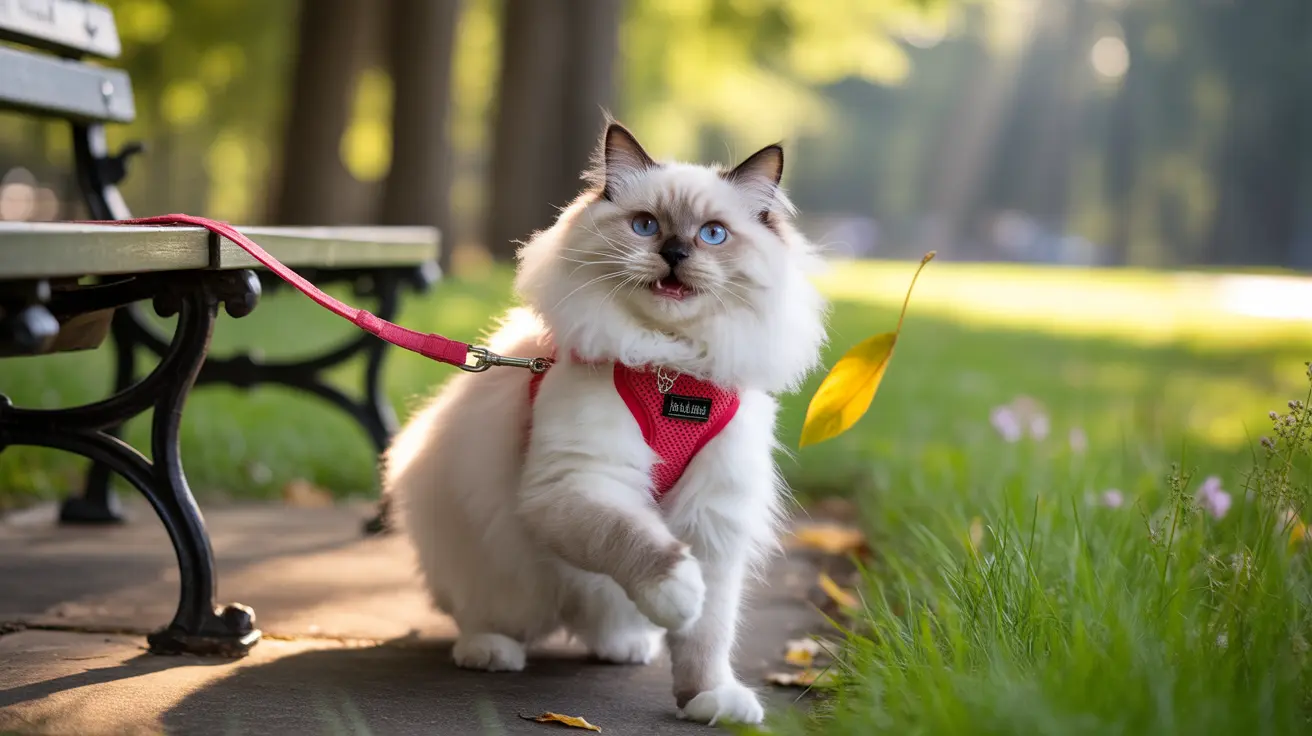For many cat owners, the question of whether walking a cat on a leash is cruel has become increasingly relevant as indoor cats seek outdoor enrichment. While the practice might seem unusual to some, research and expert opinions suggest that leash walking can actually provide significant benefits for cats when done correctly and compassionately.
However, the key to ensuring this activity remains ethical and beneficial lies in understanding your cat's individual personality and implementing proper training techniques. Let's explore the nuances of leash walking cats and address common concerns about this growing trend.
Understanding the Ethics of Cat Leash Walking
Contrary to popular belief, walking a cat on a leash is not inherently cruel. The ethics of this practice depend entirely on how it's implemented and, most importantly, how the individual cat responds to it. Many cats actually show enthusiasm for leash walking when properly introduced to the experience.
The crucial factor is respecting your cat's comfort level and never forcing them into situations that cause distress. Veterinary behaviorists emphasize that while some cats naturally take to leash walking, others may never adapt – and that's perfectly okay.
Essential Equipment and Safety Considerations
The foundation of safe and comfortable leash walking starts with proper equipment. A well-fitted harness designed specifically for cats is absolutely essential – never use a collar for leash walking, as this can cause injury or enable escape.
Choosing the Right Harness
Look for these key features in a cat harness:
- H-style or vest-style design for even pressure distribution
- Multiple adjustment points for a secure fit
- Breathable, lightweight materials
- Sturdy D-ring for leash attachment
- Quick-release buckles for safety
The Training Process: Patience is Key
Successful leash training requires a gradual, positive approach. Start by allowing your cat to become familiar with the harness indoors, using treats and praise to create positive associations. This process can take anywhere from a few days to several weeks, depending on your cat's temperament.
Steps for Success:
- Let your cat investigate the harness
- Practice wearing the harness indoors
- Add the leash indoors
- Graduate to a safe outdoor space
- Gradually increase exploration time
Physical and Mental Benefits
When implemented correctly, leash walking can provide numerous advantages for cats:
- Environmental enrichment and mental stimulation
- Physical exercise to combat obesity
- Controlled outdoor exploration
- Strengthened bond between cat and owner
- Reduced destructive behaviors due to boredom
Signs of Stress vs. Enjoyment
Understanding your cat's body language is crucial for determining whether leash walking is a positive experience. Signs of enjoyment include:
- Relaxed posture
- Forward-pointing ears
- Tail held high
- Active exploration
- Purring and rubbing
Conversely, watch for stress signals such as:
- Flattened ears
- Dilated pupils
- Tail tucking
- Excessive vocalization
- Attempts to escape the harness
Frequently Asked Questions
Is walking a cat on a leash cruel or can it be beneficial?
No, walking a cat on a leash is not cruel when done properly. It can be highly beneficial, providing exercise, mental stimulation, and safe outdoor experiences. The key is ensuring your cat willingly participates and shows signs of enjoyment.
What type of harness is safest and most comfortable for leash-walking cats?
A properly fitted H-style or vest-style harness designed specifically for cats is safest. The harness should be snug enough to prevent escape but allow for comfortable movement, with about two fingers' width of space between the harness and your cat's body.
How do I properly train my cat to walk on a leash without causing stress?
Start with indoor harness training using positive reinforcement. Let your cat become completely comfortable wearing the harness before attaching the leash. Progress slowly, moving from indoor to outdoor environments only when your cat shows confidence and comfort.
What signs indicate my cat is stressed or unhappy during leash walks?
Signs of stress include flattened ears, dilated pupils, tail tucking, excessive meowing, panting, or attempting to escape the harness. If you observe these signs, return indoors and reassess your training approach.
What are the physical and mental benefits of walking a cat on a leash?
Benefits include increased physical exercise, mental stimulation through environmental enrichment, weight management, reduced boredom-related behaviors, and a stronger bond between cat and owner. It also provides safe outdoor access for indoor cats.
Remember, every cat is unique, and while some may embrace leash walking enthusiastically, others might prefer alternative forms of enrichment. The key is to respect your cat's individual preferences while ensuring their safety and comfort remain the top priority.






